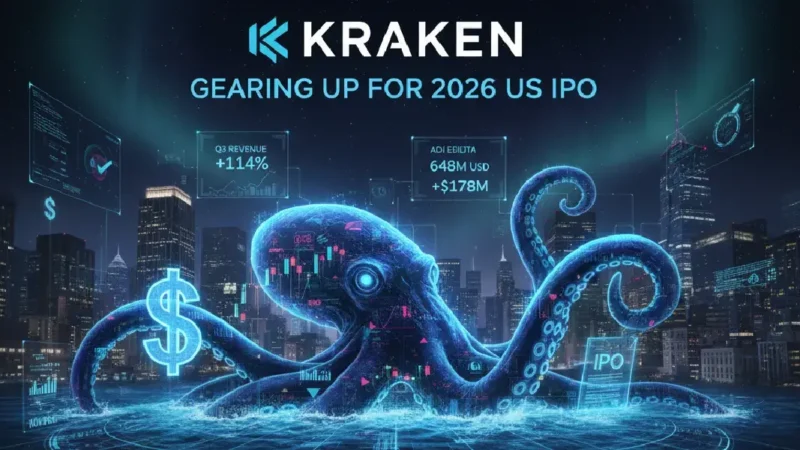Markets in Crypto-Assets: Transforming the Crypto Industry in the EU

The European Union (EU) has taken a pioneering step in crypto regulation with its adoption of the Markets in Crypto-Assets (MiCA) framework. This landmark legislation, effective from December 30, 2024, sets rigorous standards for stablecoins and digital asset operations across Europe. Designed to ensure financial stability and consumer protection, MiCA introduces strict rules on reserve backing and liquidity.
As the crypto industry continues to grow, the Markets in Crypto-Assets framework is expected to be a global benchmark. In this article, we explore the intricacies of MiCA, its implications for stakeholders like Tether, and how it reshapes the regulatory landscape.
What Is Markets in Crypto-Assets (MiCA)?
The Markets in Crypto-Assets framework is a regulatory initiative by the EU to create a harmonized legal structure for cryptocurrencies and related services. By addressing gaps in existing financial regulations, MiCA aims to:
- Foster innovation in the digital economy.
- Mitigate risks associated with crypto assets.
- Protect investors and consumers.
MiCA categorizes crypto assets, including stablecoins like Tether’s USDT, and introduces specific obligations for issuers, custodians, and exchanges.
Key Features of the Markets in Crypto-Assets Framework
1. Reserve Backing for Stablecoins
Stablecoin issuers under MiCA must demonstrate sufficient reserve backing to ensure the value of issued coins. This requirement safeguards financial stability and prevents the devaluation of widely used tokens.
2. Licensing and Authorization
Entities involved in crypto operations must obtain appropriate licensing, such as an e-money license. This measure ensures that only compliant players operate within the EU market.
3. Transparency and Reporting Standards
MiCA enforces high levels of transparency by mandating regular reporting on reserves, liquidity, and other operational metrics. This requirement promotes accountability and trust among stakeholders.
4. Consumer Protection Mechanisms
To safeguard consumers, MiCA demands robust security practices, including measures to prevent hacking, fraud, and mismanagement.
Impact of MiCA on the Crypto Industry
The implementation of Markets in Crypto-Assets has far-reaching implications for crypto businesses, particularly stablecoin issuers like Tether.
1. Regulatory Challenges for Stablecoin Issuers
Tether, the issuer of USDT, faces delays in meeting MiCA’s requirements. One critical hurdle is obtaining the necessary e-money license, which has led to temporary delistings of USDT from major European exchanges such as Coinbase.
2. Increased Operational Costs
Complying with MiCA means businesses must invest in infrastructure upgrades to meet reserve, reporting, and security standards. While this increases operational costs, it also enhances market credibility.
3. Impact on Innovation
Though MiCA promotes innovation by providing clear rules, some companies may find its requirements burdensome. Startups and smaller firms may struggle to compete in this regulated environment.
Tether’s Challenges with MiCA Compliance
As a leading stablecoin issuer, Tether has been at the center of discussions about compliance with Markets in Crypto-Assets. Tether’s flagship stablecoin, USDT, has been a global market leader, but its operations in the EU face scrutiny.
1. Delisting from Exchanges
Delays in acquiring the necessary e-money license have led to cautious responses from exchanges. Some platforms, including Coinbase, have delisted USDT to avoid regulatory risks.
2. Reputation Management
Tether must address concerns about its adherence to MiCA standards to maintain its reputation. Non-compliance could tarnish its standing in the European market.
3. Transition Period
Tether has acknowledged the need for a 6- to 18-month transition period to align with MiCA. This timeline emphasizes the complexity of meeting new regulatory demands.
Opportunities Presented by MiCA
While challenges abound, the Markets in Crypto-Assets framework also presents opportunities for growth and innovation.
1. Enhanced Investor Confidence
By enforcing transparency and security measures, MiCA can boost investor trust in crypto markets. Increased confidence could attract more institutional investors to the industry.
2. Level Playing Field
Harmonized regulations reduce market fragmentation, enabling companies to operate more seamlessly across EU member states.
3. Competitive Edge for Compliant Players
Early adopters of MiCA’s standards may gain a competitive advantage. By aligning with the framework, businesses can showcase their commitment to stability and security.
Navigating MiCA: Key Considerations for Crypto Businesses
To thrive under Markets in Crypto-Assets, companies must prioritize compliance while staying competitive.
1. Build Strong Legal Teams
Understanding MiCA’s intricacies requires experienced legal counsel. Companies should invest in teams that specialize in EU regulations.
2. Focus on Operational Resilience
Businesses must upgrade their systems to meet MiCA’s demands for reserve backing, liquidity management, and reporting.
3. Collaborate with Regulators
Engaging proactively with regulators can help businesses navigate uncertainties and expedite compliance processes.
4. Educate Stakeholders
Companies should inform investors, customers, and employees about how MiCA enhances security and transparency.
MiCA as a Global Standard for Crypto Regulation
The Markets in Crypto-Assets framework is likely to influence crypto regulations beyond the EU. Its emphasis on stability, transparency, and consumer protection sets a precedent for other regions.
1. Potential Adoption by Other Jurisdictions
Countries outside the EU may adopt similar standards to regulate their crypto markets. This alignment could create a more unified global framework.
2. Driving Institutional Adoption
Clear regulations make crypto assets more appealing to institutional investors. MiCA’s structure could pave the way for increased participation from traditional financial entities.
Stay informed, read the latest crypto news in real time!
Conclusion
The Markets in Crypto-Assets framework is a pivotal development for the crypto industry. By introducing strict rules on reserve backing, licensing, and transparency, MiCA aims to create a secure and stable digital asset ecosystem in the EU.
For businesses like Tether, navigating MiCA’s challenges is crucial to maintaining a strong presence in the European market. While compliance demands operational improvements, it also offers opportunities to build trust and gain a competitive edge.
As the global crypto industry evolves, the Markets in Crypto-Assets framework is set to become a benchmark for effective regulation. Stakeholders must adapt to this new era of accountability and innovation.
FAQs
1. What is the purpose of Markets in Crypto-Assets?
The Markets in Crypto-Assets framework aims to regulate cryptocurrencies, ensuring financial stability, investor protection, and innovation.
2. How does MiCA affect stablecoin issuers?
MiCA imposes strict reserve backing, transparency, and licensing requirements, ensuring stablecoin issuers operate securely and reliably.
3. What challenges does MiCA pose for businesses like Tether?
Challenges include obtaining licenses, managing operational costs, and meeting stringent reporting standards.
4. How can companies prepare for MiCA compliance?
Companies should focus on building strong legal teams, upgrading infrastructure, and engaging with regulators to navigate MiCA effectively.
5. Will MiCA influence global crypto regulations?
Yes, MiCA’s robust framework may inspire other jurisdictions to adopt similar standards, promoting a unified regulatory approach.
6. What opportunities does MiCA offer?
Opportunities include enhanced investor confidence, a level playing field, and a competitive advantage for compliant businesses.




